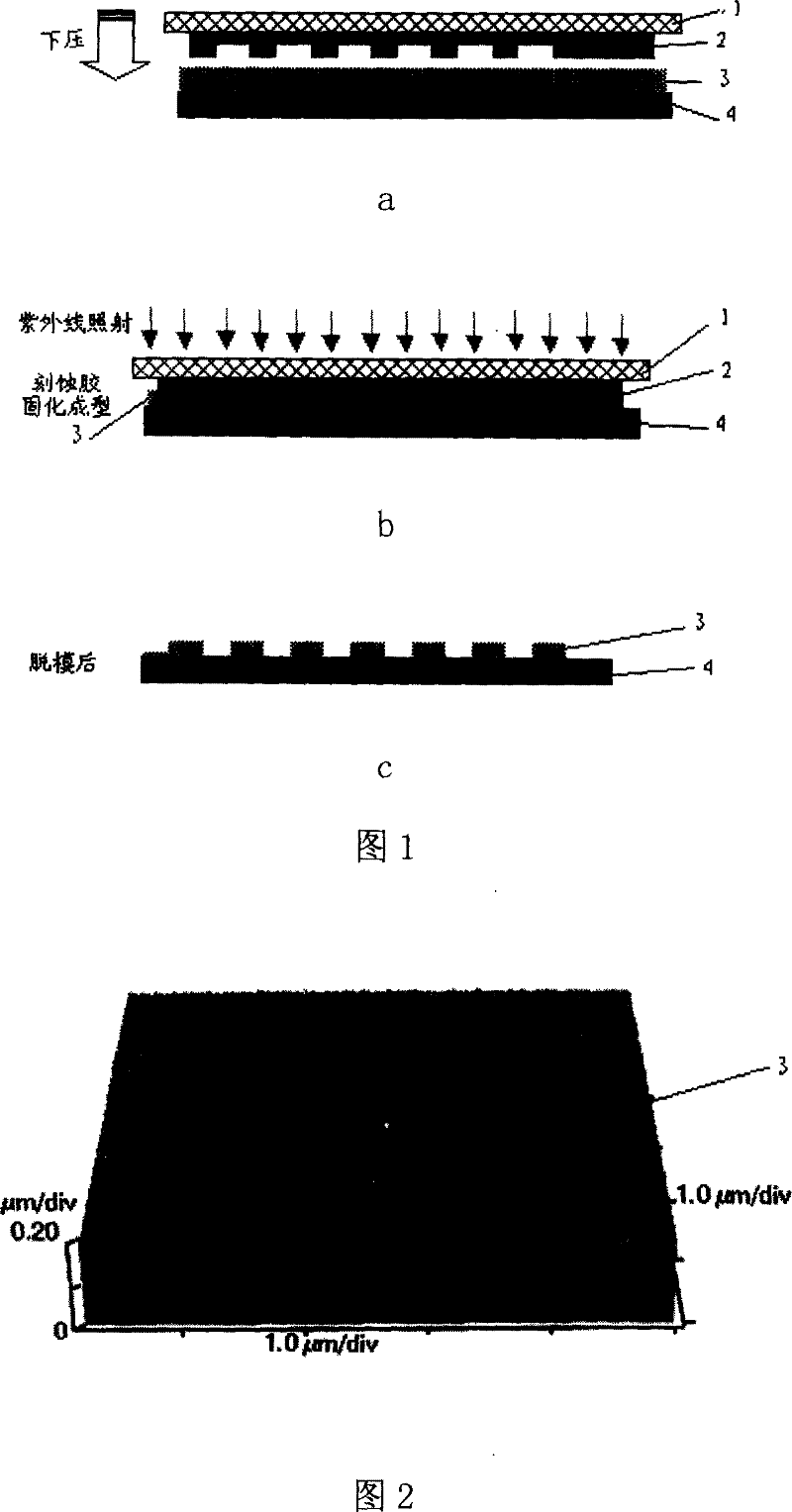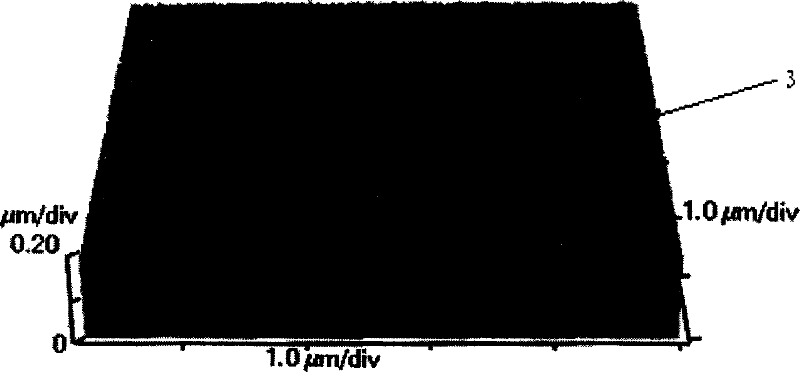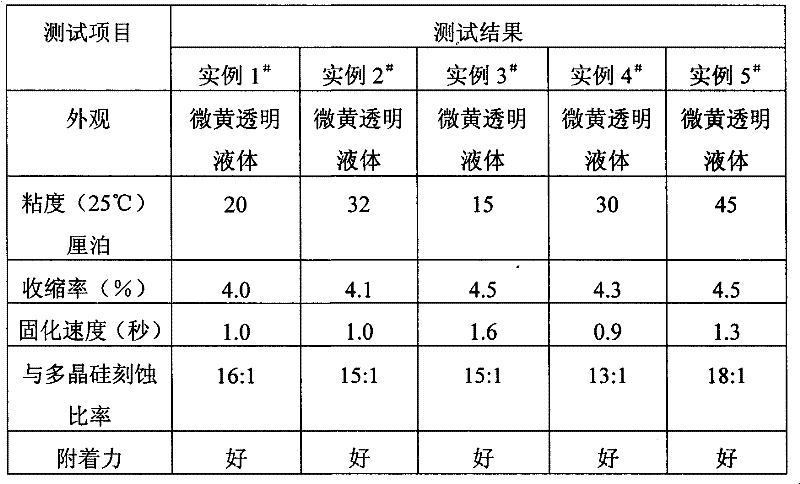Ultraviolet ray solidification cation type etching glue for nano embossing
A nano-imprinting, cationic technology, applied in the field of etchant, can solve the problems of bubble curing strength, poor reproduction accuracy, insufficient extrusion, etc., to achieve good film formation stability, ensure etching accuracy, Guarantee the effect of imprinting and replicating accuracy and efficiency
- Summary
- Abstract
- Description
- Claims
- Application Information
AI Technical Summary
Problems solved by technology
Method used
Image
Examples
Embodiment 1
[0043] First select the mixture of diaryliodonium phosphate and triarylsulfonium hexafluoroantimonate as photoinitiator, and the weight of photoinitiator is 3% of the total weight of the etchant, of which diaryliodonium phosphate accounts for 70% of the photoinitiator, triarylsulfonium hexafluoroantimonate accounts for 30% of the photoinitiator, take 15% of the total weight of triethylene glycol divinyl ether, and put the photoinitiator diaryliodonium phosphate in the Dissolve with triethylene glycol divinyl ether at 50°C, add triarylsulfonium hexafluoroantimonate and stir after cooling to room temperature to form a homogeneous solution A; 3,4-epoxy groups with a total weight ratio of 53.6% 3',4'-Epoxycyclohexylmethyl cyclohexanecarboxylate 15% linear polydimethylsiloxane 10% polycaprolactone diol was added into the device and stirred at high speed. After stirring and mixing for 2 hours, a uniform liquid B was formed. Then, solution A was added, and then mixed and stirred f...
Embodiment 2
[0045] Firstly, a mixture of 1% diaryliodonium phosphate and 1% triarylsulfonium hexafluoroarsenate in total weight ratio was selected as the photoinitiator, and the photoinitiator diaryliodonium phosphate was heated at 50 °C. Dissolve with 1,4-cyclohexyl dimethanol divinyl ether, the amount of 1,4-cyclohexyl dimethanol divinyl ether is 10% of the total weight ratio, after dissolving, cool to room temperature and add triarylsulfonium hexafluoroarsenic acid-acid-acid-3',4'-epoxycyclohexylmethyl ester and 20% bis-(3 , 4-epoxycyclohexyl)-adipate mixture 20% polycaprolactone triol was added into the device and stirred at a high speed. After stirring and mixing for 2 hours, a uniform liquid B was formed. Then, the solution A was added, and the uniform liquid C was obtained by mixing and stirring for 2 hours. Then, the total weight ratio of adding while stirring was: 8% polyether alkyl co-modified silicone oil defoaming agent, leveling agent and coupling agent auxiliary agent, aft...
Embodiment 3
[0047] First, a mixture of 0.2% diaryliodonium phosphate and 0.8% triarylsulfonium hexafluoroantimonate by weight was selected as the photoinitiator, and the diaryliodonium phosphate photoinitiator was heated at 50 °C. Dissolve with the mixed solution of glycerol carbonate allyl ether and dodecyl vinyl ether, the mixed solution of glycerol carbonate allyl ether and dodecyl vinyl ether is 40% of the total weight ratio, and after dissolving, it is cooled to At room temperature, add triarylsulfonium hexafluoroantimonate and stir to form a homogeneous solution A; 3,4-epoxy-6-methyl-cyclohexylcarboxylic acid-3′, 4′ with a total weight ratio of 10% respectively - Epoxy-6'-methylcyclohexylmethyl ester and 30% bulk polydimethylsiloxane 15% 1,2-epoxyhexadecane was put into the device and stirred at a high speed. After stirring and mixing for 2 hours, a homogeneous liquid B was formed. Then, solution A was added, and then mixed and stirred for 2 hours to obtain a homogeneous liquid C. ...
PUM
 Login to View More
Login to View More Abstract
Description
Claims
Application Information
 Login to View More
Login to View More - R&D
- Intellectual Property
- Life Sciences
- Materials
- Tech Scout
- Unparalleled Data Quality
- Higher Quality Content
- 60% Fewer Hallucinations
Browse by: Latest US Patents, China's latest patents, Technical Efficacy Thesaurus, Application Domain, Technology Topic, Popular Technical Reports.
© 2025 PatSnap. All rights reserved.Legal|Privacy policy|Modern Slavery Act Transparency Statement|Sitemap|About US| Contact US: help@patsnap.com



